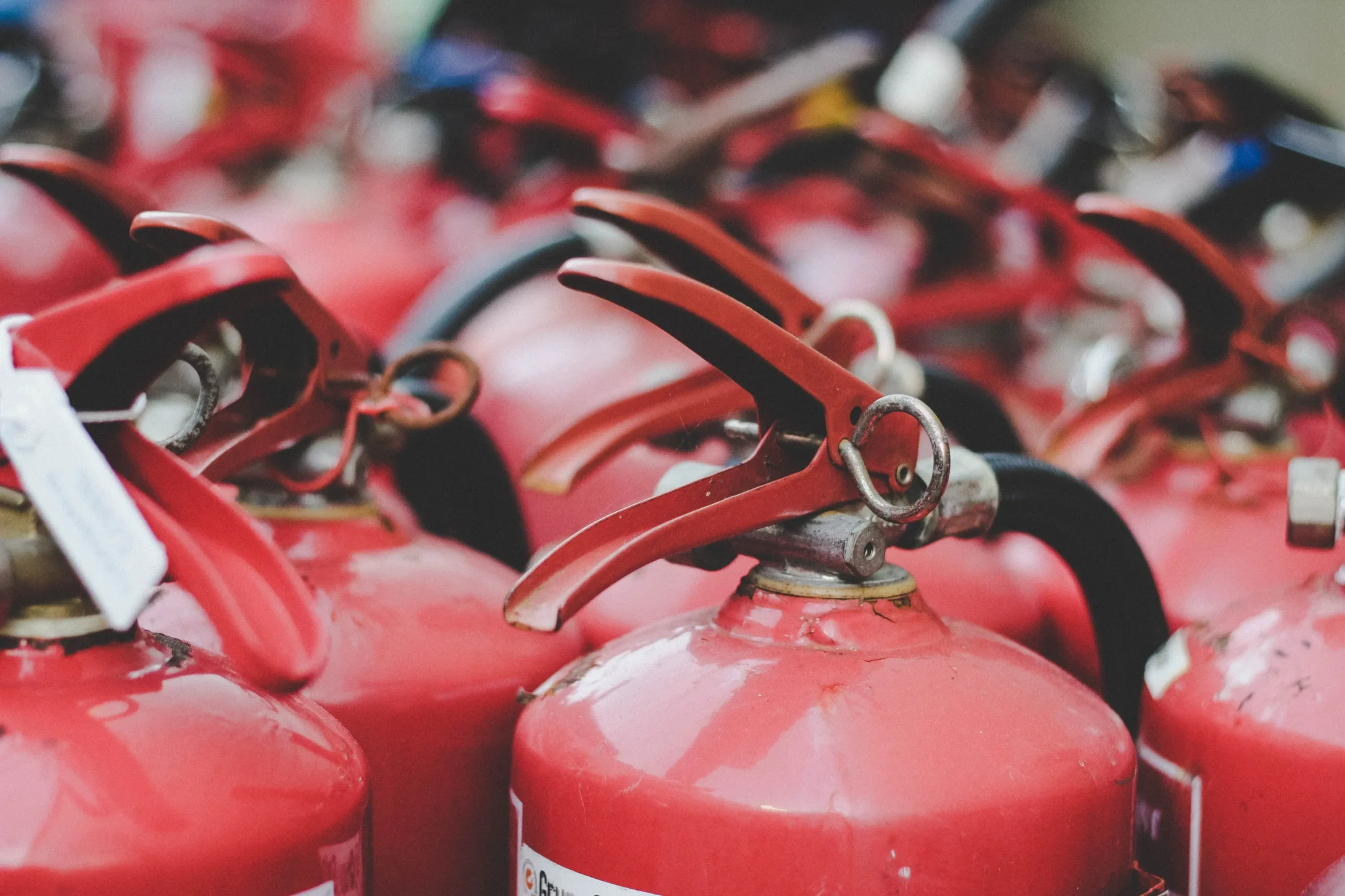Everything You Should Know About
Life Safety Inspections
- Field Service Management
- 9 Min Read
All of us have heard industry to keep our community and its residents safe. Business owners of the NFPA and know of the measures taken by the fire protection and building managers, along with the fire protection department, also carry the responsibility to ensure their establishments are safe and secure for tenants, employees, and customers that come and go frequently. The responsibility for safety can be accomplished by following the codes and standards set forth by the NFPA.
A significant aspect of Fire Safety is the Life Safety Code, a model code created by the National Fire Protection Association. The NFPA 101: Life Safety Code, 2018, is one of the association’s most important codes and standards, providing the foundation for multiple state and city codes. They are extensively used to make strategies that protect people based on the building structure, protection, and occupancy elements that reduce the effects of fire and other risks. It is the only document in the area that covers life safety in both new and existing structures, making it unique in the sector.
Life Safety inspection can help building owners and occupants comply with fire and life safety regulations and stay up to speed on current life safety needs. It is also strongly advised to be proactive regarding life safety systems to protect you from threats. Life safety inspections are typically performed yearly, with some reviews occurring on other days.
While we know the basics of Fire Safety, we must educate ourselves with the detailed codes and standards set by the National Fire Protection Association. As a Fire industry contractor and inspector, you will need frequent refreshers on what Fire Safety and Life Safety Inspections comprise to execute your visits and checkups successfully.
And that is why we have curated this post with a concise explanation of what Life Safety Codes and Inspections are and how you can be up-to-date of their particular requirements. We have also written a blog on A Complete Fire Safety Inspection Checklist, which will provide you with the condensed version of the essential NFPA Life Safety Codes and Standards and give you a comprehensive checklist for a life safety inspection.
But this article can also come in handy for non-fire industry professionals in case they want to keep themselves informed of the specifications of the life safety codes and inspections.
ZenFire has created a knowledge vault for plumbing contractors and technicians like yourself. Head to our website for more informative articles to enhance your business knowledge.
ZenFire field service management software can also streamline and optimize your workflow to generate growth and more revenue for your business!
Book a FREE demo today to start streamlining your workflow!
Here What We Cover
Why Are Life Safety Inspections Necessary, And What Do They Check?
Life Safety Inspections protect the residents’ safety in a building. The inspections look at building design, fire protection systems, and operational factors that provide security against fire, smoke, and general panic during emergencies. They systematically carry out preventative maintenance plans that ensure regulatory compliance and long-term building safety. The buildings should meet all the code requirements of NFPA 101 to pass the life safety inspections.
Regular inspections of an organization/facility can have multiple benefits, such as lower maintenance costs, avoidance of fines and penalties for noncompliance, insurance discounts, and the ability to discover and remedy weaknesses.
Undoubtedly, an essential purpose is to prevent the loss of human life and goods.
Routine inspections and complete preventative maintenance (PM) programs are the best ways to warn businesses and building owners to check and keep their fire and life safety systems updated and functioning.
A professional fire protection company’s comprehensive inspection and preventative maintenance program will proactively locate the fire and life safety issues and resolve these failures before an emergency, ensuring all systems perform optimally.
Each inspection and preventative maintenance program is customized to meet the specific needs of a business or property. There are also state-specific rules, so we can only provide a general overview of what a fire marshal or inspection business would look at. The following are the usual suspects who must pass inspection:
- Each fire prevention system in the institution is subjected to a physical inspection.
- Sprinkler systems, emergency lights, fire alarm systems, heat detectors, and other safety equipment are all parts of the safety system.
- Fire extinguishers, sprinkler heads, and other fire prevention devices are all safety devices.
- Building Safety Standards have the most variances from one location to the next. These safety standards could include how double doors in emergency route halls open, whether there is any clutter blocking access to smoke detectors or fire extinguishers, and various other factors.
- A full report identifies system issues and recommended measures to assure functionality and compliance.
- Any fire and life safety systems that are broken or exhibit symptoms of corrosion are serviced and repaired.
After receiving the inspection report that details any NFPA 101 deficiencies the building may have, you will have to resolve these deficiencies by a specific deadline. Another inspection will ensure the facility complies with all fire and life safety requirements.Compliance with these rules makes a building safer for its tenants, visitors, and owners.

Use our free estimate template now
Make winning quotes in minutes—for any industry and any job.
HERE IS HOW YOU PREPARE FOR A LIFE SAFETY INSPECTION AND CLEAR IT WITH FAVORABLE RESULTS
BENEFITS OF LIFE SAFETY INSPECTIONS
Hiring a professional fire inspector with the most potent instruments available is one of the best methods to ensure your building has life and fire safety. This post should provide helpful information for your next life safety inspection. You can know what to bring and avoid during a building inspection. By conducting regular Life Safety Inspections, you improve the lives of your employees, clients, and yourself.
An inspector who uses ZenFire’s Inspection Solution has immediate access to the most recent entire issue of NFPA 101. They will never overlook anything when they follow an inspection through the Inspect Point program.
ZenFire’s Inspection Solution is one of the best tools you can look for.
- Ensure proper functioning of safety systems like the
- Fire Sprinkler System
- Fire Alarm System
- Fire Suppression System
- Keep in Compliance with NFPA Codes and Standards
- Escape from paying fines
- Obtain Insurance Discounts
- Know when System Upgrades and Updates are needed

Life Safety Inspection Checklist: Major Checkpoints Fire And Life Safety Inspectors Will Inspect
Regardless of the level of inspection, testing, and maintenance (ITM) completed, building owners and facility managers must confirm the operation of all building fire prevention and life safety systems before reoccupation. To aid these efforts, NFPA has created a list of characteristics that a trained person should validate in a building to assure the safety of all its inhabitants. The checklist below gives some basic procedures to help guarantee the occupancy is safe enough until a competent professional can conduct the regularly planned ITM of all fire prevention and life safety systems.
RECORD CHECKLIST DETAILS
- Inspector Name
- Location to be inspected
- Address of Location
- Owner of Location
- Date of Inspection
- Governing Authority
GENERAL
All inspection, testing, and maintenance are up to date on the following systems or building elements:
- All inspection, testing, and maintenance are up to date on the following systems or building elements.
- Water-based fire protection system (NFPA 25)
- Fire pumps (NFPA 25)
- Fire alarm system (NFPA 72)
- Commercial cooking equipment ventilation and fire protection (NFPA 96)
- Portable fire extinguishers (NFPA 10)
- Fire/smoke dampers (NFPA 80 and NFPA 105)
- All fire doors (NFPA 80 and 101)
- Emergency lighting equipment (NFPA 101)
- Exit signs (NFPA 101)
- Appropriate fire department access is unobstructed. (NFPA 1)
- For wildfire-prone areas, routine maintenance of combustible vegetation has been completed. (NFPA 1)
- Hand sanitizers or alcohol-based hand rubs are stored and managed safely (NFPA 101).
- Required personnel are familiar with and trained per the emergency action plan (NFPA 101).
- Check with the local authority having jurisdiction (AHJ) to determine if they require any special provisions before reoccupying the building.
WATER-BASED SYSTEMS (NFPA 25)
- All control valves are open
- Gauges are operable and not physically damaged.
- Water-filled piping is maintained above 40 F (4 C)
- Sprinklers are not physically damaged.
- There are no leaks from the piping or sprinklers.
- Fire department connections are accessible and not physically damaged.
- Hose connections (if provided) are accessible and not physically damaged.
FIRE ALARM SYSTEMS (NFPA 72)
- There are no trouble, supervisory, or alarm signals.
- Notification appliances are not blocked or physically damaged.
- Initiating devices (smoke, heat, etc.) are not physically damaged.
- Manual pull stations are accessible and not physically damaged.
FIRE EXTINGUISHERS (NFPA 10)
- Fire extinguishers are accessible and not physically damaged.
- The pressure gauge reading or indicator is in the operable range or position on all fire extinguishers.
MEANS OF EGRESS (NFPA 101)
- All means of egress paths are unobstructed.
- All doors in the means of egress are working correctly and are not physically damaged.
- All doors are operable from the egress side.
- All doors are not physically blocked.
- All fire doors are working correctly and not physically damaged.
- All fire doors latch.
- All required lighting in the means of egress is functioning correctly.
- Means of egress are illuminated when occupied.
- Emergency lighting is not blocked or physically damaged.
- Exit signs are not blocked or physically damaged.
- Exit signs are properly illuminated.
ELECTRICAL (NFPA 70B AND NFPA 110)
- Confirm that routine maintenance and operational testing are completed for the following:
- Electrical equipment per the building’s Electrical Preventative Maintenance Program.
- Emergency and standby power systems.
NFPA Fire And Life Safety Inspection Manual
The Fire and Life Safety Inspection Manual gives comprehensive, practical guidelines for evaluating building fire safety.
This comprehensive resource combines content from scores of codes and standards and is the most up-to-date reference for fire protection, fire safety, and life safety inspections. The step-by-step instructions lead you through the fire inspection procedure, focusing on life safety factors.
You can procure The NFPA Fire and Life Safety Inspection Manual on the official NFPA website and secure an abundant resource of vital fire and life safety codes and standards.
You can also check out our own Life Safety Inspection Checklist that we have up on our website, giving you an easy outlet to use an immediately available safety checklist for your personal needs.
Life safety codes cannot be ignored, but most businesses find managing the varied testing, maintenance, and inspection needs challenging. While it is obvious that fire and life safety systems are crucial, it is equally necessary to understand the installation, testing, and maintenance criteria specified by national and local authorities to ensure optimal safety and compliance.
The best approach to stay compliant is to have a professional fire protection firm inspect your fire and life safety systems. These businesses have the tools and training to ensure compliance while identifying and correcting potentially harmful situations.
Secure the best available Fire Inspection Software for your firm to ensure the professionalism of your fire protection and inspection business. Its premium features can provide your customers with the best experience through your service. You can also join the Fire Inspection Contractors Super League by growing your business with a free consultation from ZenFire.
Get posts like this in your inbox.
Keep learning how to run a 5-star business with our bi-weekly newsletter.
FAQs
What Is Life Safety?
Life safety primarily refers to protection against any obstacle or hazard that may put a person’s life in danger, in a public or private environment like a building or residential space.
Life Safety includes things like strategies and rules to prevent risks that could put a human’s life at potential risk through situations like structural failures, natural disasters, out-of-control fires, and any release of hazardous chemicals in the environment.
The measures of Life Safety, to prevent any harmful situation, include fire protection systems, hazardous material management, building code regulations, evacuation plans, and such more to alleviate any risk of danger.
What is The Life Safety Code?
The Life Safety Code is a standard followed around America, published by the NFPA, focusing on the features that need to be implemented to prevent any harm to individuals following a fire incident. These safety measures are implemented before even a fire occurs.
These measures can include structures like fire alarms, immediate communication vessels, fire sprinklers, pumps, hoses, and similar equipment/provisions for safety
Explore a better way to grow your business. Book a free demo now!
Get organized, win jobs, and wow customers.
Book A Free Demo with ZenTrades Today!
Related Reading
Why Your Field Software Management Software Needs QuickBooks Integration
ZenTrades Why Your Field Service Management Software Needs QuickBooks Integration Read More Request Demo...
Read MoreZenTrades How To Manage Electrical Service Agreements Like...
Read MoreZenTrades The Best 5 Jobber Alternatives In 2023...
Read More

